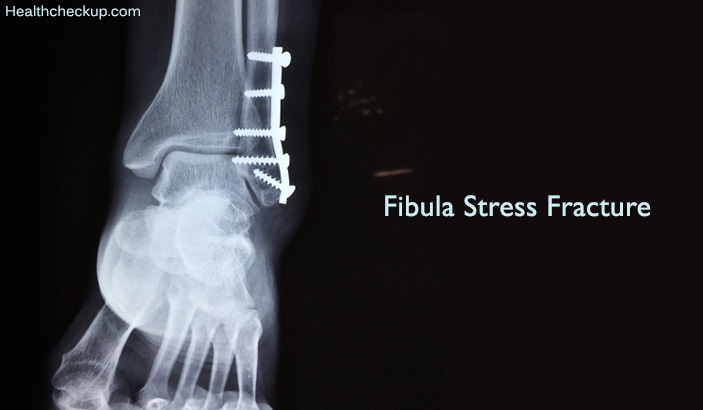What Is A Fibula Stress Fracture?
A fibula stress fracture is a small crack that occurs in the fibula bone. Compared to other fractures, a fibula stress fracture is not common because the fibula supports less body weight. However, the possibility of getting a fibula stress fracture exists. In fibula stress fractures, the crack can be as small as a hairline. This fracture occurs over time due to the strain put on the fibula bone during your daily activities.
Overview of Fibula Stress Fracture
The fibula is considered the longest most slender of all bones in the human body. It has a variety of functions including; carrying approximately 17% of your body weight and transferring it from the shin to the foot, supporting your leg, ankle and body muscles.
A fibula stress fracture near knee is known as a Fibula Head Fracture. A lateral malleolus fracture refers to a break around the ankle. If a small part of the bone is pulled off, it’s called an Avulsion Fracture. A break that affects the middle part of the leg due to impact is known as a Shaft Fracture. A stress fracture is a fracture the size of a hairline that results from repeated injury.
A fibula stress fracture is a break in the continuity of the fibula bone in your body. The fibula is the bone on the frontal part of the lower part of the leg. It is parallel to the tibia and they are joined together at the knee and below at the ankle. The fibula is, however, smaller than the tibia.
What Causes Fibula Stress Fracture?
A fibula bone stress fracture can be as a result of a number of factors. It can be because of the twisting forces caused by the muscles that surround and come into contact with the fibula. Exerting too much weight or pressure on the fibula for prolonged amounts of time can also cause a stress fracture. A change mostly an increase in training routine is another cause. Other factors that could lead to a fibula bone stress fracture include
- Poor flexibility
- Poor fitting footwear
- General weakness of the muscles
- Training excessively
- Joint stiffness
- Low bone density or calcium depletion especially in older people.
Fibula Stress Fracture Symptoms
The main symptom of a fibula bone stress fracture is pain around the area affected or general lower part of the leg. You may experience fibula pain when walking or when you exercise. There will also be some local tenderness to the area affected. This pain may sometime wear off when you get some rest but comes back when you exert even the least amount of pressure on it.
You may notice some deformity on the affected area in a fibula stress fracture and the lower part of the leg generally. If the nerves are affected, you may notice numbness or a tingling sensation. In severe cases, other bones and joints neighbouring the area may be affected.
Fibula Stress Fracture Test
If you notice some of the symptoms are mentioned, it is advisable to seek medical attention. Seek the help of a qualified medical practitioner to examine if you have a fibula stress fracture. The doctor may conduct a physical examination. They may also request for an X-ray to conclusively reach a diagnosis. To check on the severity of the injury, a doctor may also conduct further scans including;
How Long Does A Fibula Stress Fracture Take To Heal?
Your fibula stress fracture recovery time is dictated by a number of factors. On average a minor closed fracture can take between 6-8 weeks to heal properly. This is if you follow the doctor’s orders and have plenty of rest and another physiotherapy. In the case of an open fracture, the time may be between 10-12 weeks if you follow the doctor’s instructions precisely.
Treatments For Fibular Stress Fracture
For all types of ailments including fractures, it is always good to get the advice of a doctor. After you have been diagnosed with a fibula stress fracture, a doctor may perform a surgical procedure for treatment. They will clean, realign and wrap the injured area with a cast to limit movement and promote healing. They may also use metal pins and screws to hold the fractured bone together as it heals. Your doctor may also prescribe some antibiotics to help in the healing or to soothe the pain. Other treatments may include;
- Electrotherapy
- Using crutches
- Gradual returning to an activity plan
- Massaging the soft tissues
- A heat retainer or ankle support
- Sports massages
If you have been diagnosed with a fibula stress fracture, there are a variety of treatments that can help remedy the problem. The treatments may vary according to severity, type and also the location of the fracture. The most basic rule to observe when you get a fibula fracture is rest. Take enough rest with the affected leg elevated whenever possible. You can also place an ice pack on the leg to ease the pain. A fibula stress fracture is not life-threatening.
Medically Reviewed By

Professionally, a trained Microbiologist and Plant operator, Eustace is an experienced health content writer who is passionate about helping people lead a healthy life.








